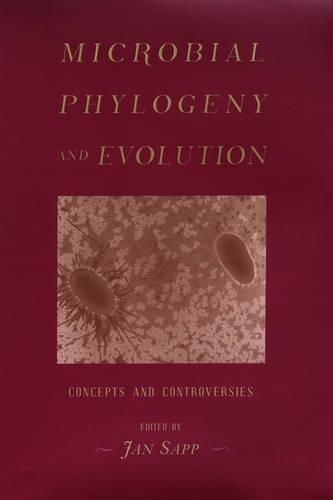Overview
The birth of bacterial genomics since the mid-1990s brought withit several conceptual modifications and wholly new controversies. Working beyond the scope of the neo-Darwinian evolutionary synthesis, a group of leading microbial evolutionists addresses the following and related issues, often with markedly varied viewpoints: · Did the eukaryotic nucleus, cytoskeleton and cilia also orginate from symbiosis? · Do the current scenarios about he origin of mitochondria and plastids require revision? · What is the extent of lateral gene transfer (between ""species"") among bacteria? · Does the rDNA phylogenetic tree still stand in the age of genomics? · Is the course of the first 3 billion years of evolution even knowable?
Full Product Details
Author: Jan Sapp (Department of Biology, Faculty of Pure and Applied Science, Department of Biology, Faculty of Pure and Applied Science, York University)
Publisher: Oxford University Press Inc
Imprint: Oxford University Press Inc
Dimensions:
Width: 23.90cm
, Height: 2.10cm
, Length: 16.40cm
Weight: 0.612kg
ISBN: 9780195168778
ISBN 10: 0195168771
Pages: 352
Publication Date: 24 March 2005
Audience:
Professional and scholarly
,
Professional & Vocational
Format: Hardback
Publisher's Status: Active
Availability: To order

Stock availability from the supplier is unknown. We will order it for you and ship this item to you once it is received by us.
Reviews
This book will leave readers in no doubt that there has never been a more breathless and exciting time to be an evolutionary biologist, and that microbes have rightfully taken center stage. --Edward Feil, The Quarterly Review of Biology <br> This volume is timely, interesting, and important. Dr. Sapp has gathered a group of authors that includies the best in the field of microbial evolution. ... Any scientist interested in the origin and evolution of prokaryotic and eukaryotic cells will want to peruse this book. --Nicholas Gillham, J.B. Duke Professor of Biology Emeritus, Duke University<br> This book has two great advantages. First, it sets out why the subject of bacterial evolution has become of central importance to considerations of the origins of living organisms and of a variety of their cell and molecular mechanisms. Second, it sets out the contrasting viewpoints on the significance of recent research with unique coherence. The 21st century will see the continuing emergence of radical new ideas on the evolution and interrelationships of living organisms. No other book sets out the currect situation and possible future developments so clearly and authoritatively. --Sir David Smith, Professor Emeritus at the University of Oxford, Fellow of the Royal Society of London<br>
Author Information
Jay Sapp is Professor of History of the Biological Sciences, Department of Biology, York University.




